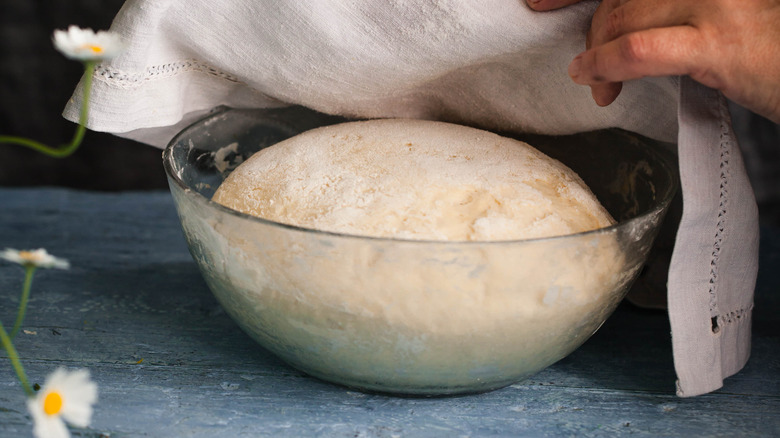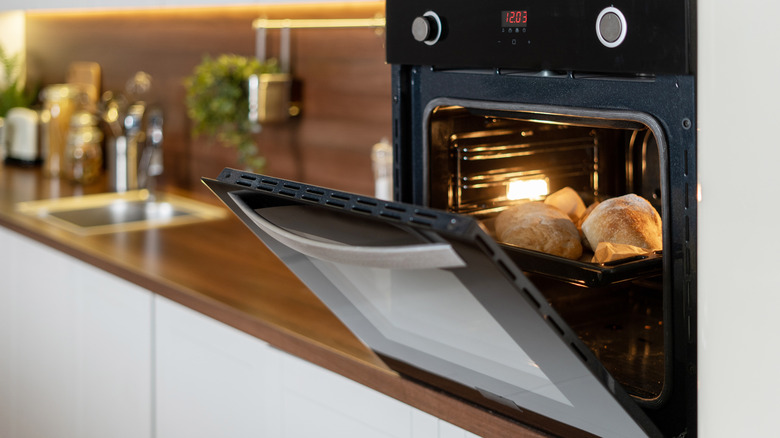Is It Possible To Proof Bread In The Oven?
Unless you're a seasoned breadmaker or the owner of a food science doctorate, you might have a question or two about proofing. Proofing activates the yeast in the dough, explains MasterClass. As the yeast ferments, it soaks in the sugar and carbohydrates from the dough and lets out carbon dioxide, which gets released into the dough and makes it rise. Considering yeast is what creates the air pockets in bread dough, proofing is a hugely important step to achieving a successful loaf. According to Busby's Bakery, proofing conditions play a crucial role in determining final flavor and texture. If bread isn't allowed to proof adequately, the result is a tough loaf with a tight crumb.
Room-temperature proofing should happen at around 75 degrees Fahrenheit. But, it's unlikely that many home cooks' kitchens are that warm during the winter months. In the summer months, when the air conditioning is blasting, it isn't an ideal condition for a rising loaf, either. If you're a novice baker, then there's probably a good chance you don't have a proofing basket. But if you're even considering baking anything at all, then you almost certainly have an oven. Believe it or not, you can proof the dough in there — and you don't even have to turn the oven on.
Grab some hot water and a lightbulb
To proof bread in the oven, says America's Test Kitchen, fill a loaf pan with boiling water and set it on the bottom rack of your oven. Then, place your dough on the middle or top rack and close the door. That's it. The result is a sort of do-it-yourself-proofing box: a warm, steamy, enclosed space for dough to proof in a temperature-controlled environment.
Instead of using boiling water as the heating element, King Arthur Flour suggests turning on the oven light. It'll gently warm the inside of the oven, and after about an hour, the oven should reach 76 degrees — ideal for proofing. The outlet recommends turning the light on and allowing it to warm the oven for an hour, popping your dough inside, and turning the light off after about 30 minutes. Or, per Baker Bettie, you can preheat your oven for just two minutes, then kill the heat and place your dough on the middle rack, covered. Using the hot water method, the steam provides enough humidity to keep the dough moist, as it proofs, says Busby's Bakery, so it isn't necessary to cover the dough. However, for the oven-light and preheating methods, it's a good idea to cover your dough to keep that moisture locked in.

